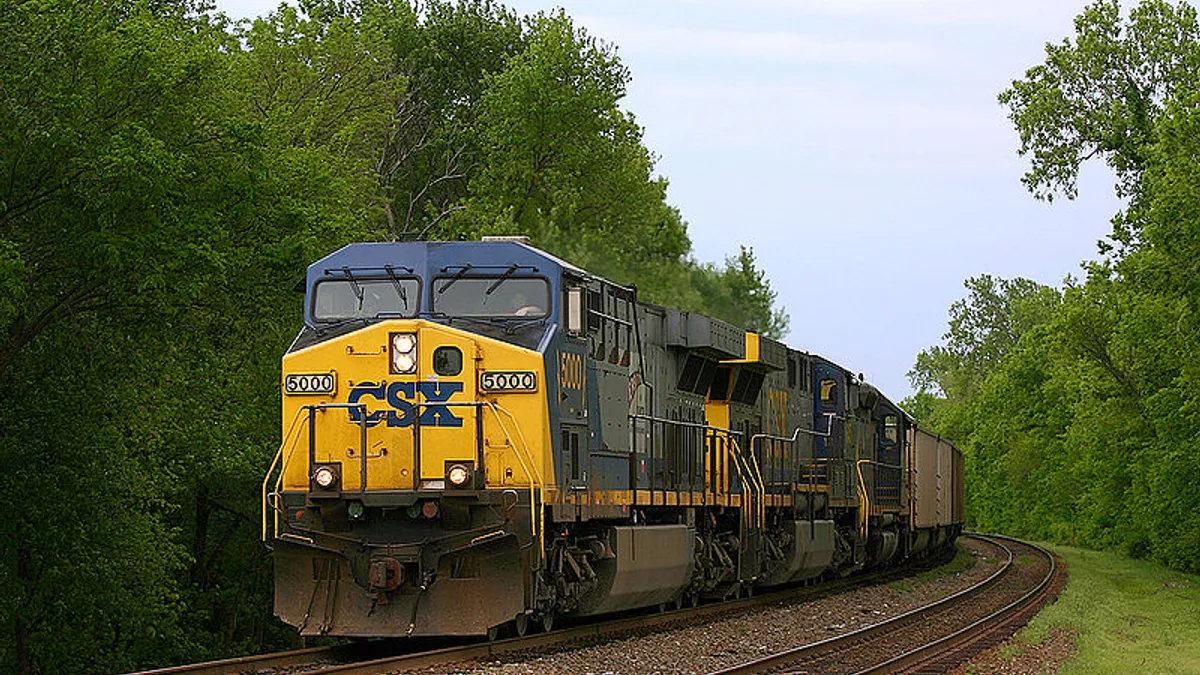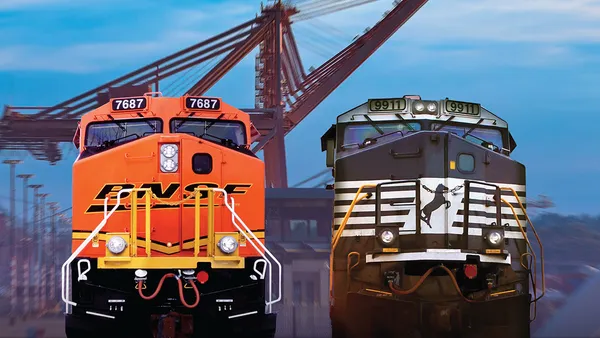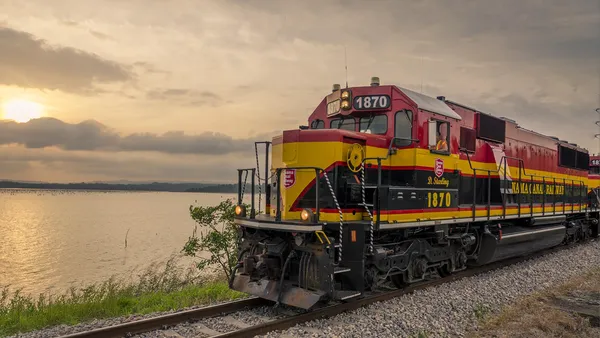Dive Brief:
- CSX will cut 230 more domestic intermodal pairs as of Jan. 3, 2019, the railroad told Supply Chain Dive. It will also slash 65 international intermodal pairs.
- The service change announcement, originally made through its Fast Facts service, is part of a multi-year strategy to offer a more reliable, less redundant and higher density rail transportation service, according to an email sent to customers by CSX's sales and marketing team.
- "Not only do these changes further enhance the BNSF and UP interchange plan, which have improved service by alleviating Chicago congestion ahead of peak season, they solidify our intermodal network offering," wrote Maryclare Kenney, CSX sales and marketing's vice president of intermodal and automotive.
Dive Insight:
The intermodal shifts are part of a master plan by CSX to consolidate its railroad network in order to provide more direct origin-and-destination pairs.
At this year's investor conference, the railroad said by 2020 it hopes to have slashed its workforce to 21,000 employees (from 27,200 in 2017), its cars online to 109,000 (from 136,000), its locomotives to 2,420 (from 3,000), and have transitioned from 12 to just four hump yards on its network (one per operating region).
It's an ambitious plan designed to improve the company's operating ratio by making each asset work to its full potential by eliminating redundancies. And redundancies there are plenty, according to CSX's leadership.
After all, CSX was formed out of a combination of roughly nine other railroads, leading the combined company to be saturated with track, locomotives, yards and terminals.
In practice, this also meant the service network was designed somewhat inefficiently. In the past, CSX would take advantage of its yards and have cars travel between various hubs before arriving at its final destination. A train traveling from Waycross, Georgia, to Miami, Florida, would often stop in Orlando, Florida first. The practice led to six added days of transit time per train, according to the investor presentation.
As a result, cutting intermodal pairs can result in reduced fuel costs and lead times, as total miles traveled by trains are reduced. It can also free up real estate and allow CSX to sell unused track to other lines.
However, the decisions do not come without a cost. Service adjustments can often result in short-term delays and confusion. Customers and rail partners — like Union Pacific and BNSF — may suffer as their usual transportation routes shift.














